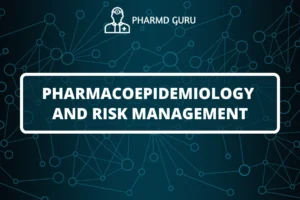APPLICATION OF PHARMACOECONOMICS:
Pharmacoeconomics, the study of the economic impact and value of pharmaceutical interventions, has gained significant importance in healthcare decision-making. It provides insights into the cost-effectiveness, cost-benefit, and cost-utility of different treatments, allowing decision-makers to allocate resources efficiently. In this article, we will explore the applications of pharmacoeconomics through the use of software tools and real-world case studies.
SCROLL DOWN TO THE BOTTOM OF THIS PAGE FOR ACTUAL NOTES.
TABLE OF CONTENTS:
- Introduction: The Significance of Pharmacoeconomics
- Pharmacoeconomics Software: Streamlining Analysis and Decision-Making
- Case Studies: Real-World Applications of Pharmacoeconomics
- 3.1 Study 1: Assessing the Cost-Effectiveness of a New Drug for Hypertension
- 3.2 Study 2: Evaluating the Cost-Benefit of a Vaccination Program
- 3.3 Study 3: Measuring the Cost-Utility of a Novel Therapy for Diabetes
- Benefits and Limitations of Pharmacoeconomic Applications
1. Introduction: The Significance of Pharmacoeconomics
Pharmacoeconomics plays a crucial role in healthcare decision-making by evaluating the economic impact and value of pharmaceutical interventions. It helps decision-makers assess the efficiency and effectiveness of treatments, compare different options, and allocate resources appropriately. Pharmacoeconomic analyses provide valuable insights into the cost-effectiveness, cost-benefit, and cost-utility of interventions.
2. Pharmacoeconomics Software: Streamlining Analysis and Decision-Making
Pharmacoeconomics software tools have emerged to streamline the process of conducting economic evaluations and facilitate evidence-based decision-making. These software solutions offer a range of features, including data management, modeling, sensitivity analysis, and reporting capabilities. By automating complex calculations and providing intuitive interfaces, pharmacoeconomics software enables researchers and decision-makers to perform analyses more efficiently and generate reliable results.
3. Case Studies: Real-World Applications of Pharmacoeconomics
3.1 Study 1: Assessing the Cost-Effectiveness of a New Drug for Hypertension
In this case study, pharmacoeconomic analysis was conducted to evaluate the cost-effectiveness of a new antihypertensive medication compared to existing therapies. The study involved collecting data on treatment costs, healthcare resource utilization, and patient outcomes. By comparing the costs and effectiveness of the new drug with alternative options, decision-makers gained insights into its economic value and impact on patient care.
3.2 Study 2: Evaluating the Cost-Benefit of a Vaccination Program
This case study focused on assessing the cost-benefit of implementing a vaccination program for a specific infectious disease. The analysis involved estimating the costs associated with the program, such as vaccine procurement and administration, as well as the potential benefits in terms of reduced disease burden and healthcare costs. By quantifying the costs and benefits, decision-makers could determine whether the program was economically justified.
3.3 Study 3: Measuring the Cost-Utility of a Novel Therapy for Diabetes
In this case study, cost-utility analysis was employed to evaluate a novel therapy for diabetes management. The analysis incorporated both the costs of the treatment and its impact on patients’ quality-adjusted life years (QALYs). By comparing the cost per QALY gained with other treatment options, decision-makers could assess the cost-effectiveness and long-term value of the innovative therapy.
4. Benefits and Limitations of Pharmacoeconomic Applications
The applications of pharmacoeconomics offer several benefits to healthcare decision-making. They provide evidence-based insights into the economic value of interventions, assist in resource allocation, and support formulary management decisions. By considering the costs, benefits, and outcomes of different treatments, decision-makers can optimize patient care and achieve cost-effective healthcare.
However, there are limitations to pharmacoeconomic applications. Data availability, accuracy, and generalizability can pose challenges in conducting robust analyses. The complexity of economic evaluations and the need for appropriate modeling techniques require expertise in pharmacoeconomics. Additionally, the interpretation and application of results require careful consideration of contextual factors and stakeholder perspectives.
ACTUAL NOTES:
PATH: PHARMD/ PHARMD NOTES/ PHARMD FIFTH YEAR NOTES/ PHARMACOEPIDEMIOLOGY AND PHARMACOECONOMICS/ APPLICATION OF PHARMACOECONOMICS.




